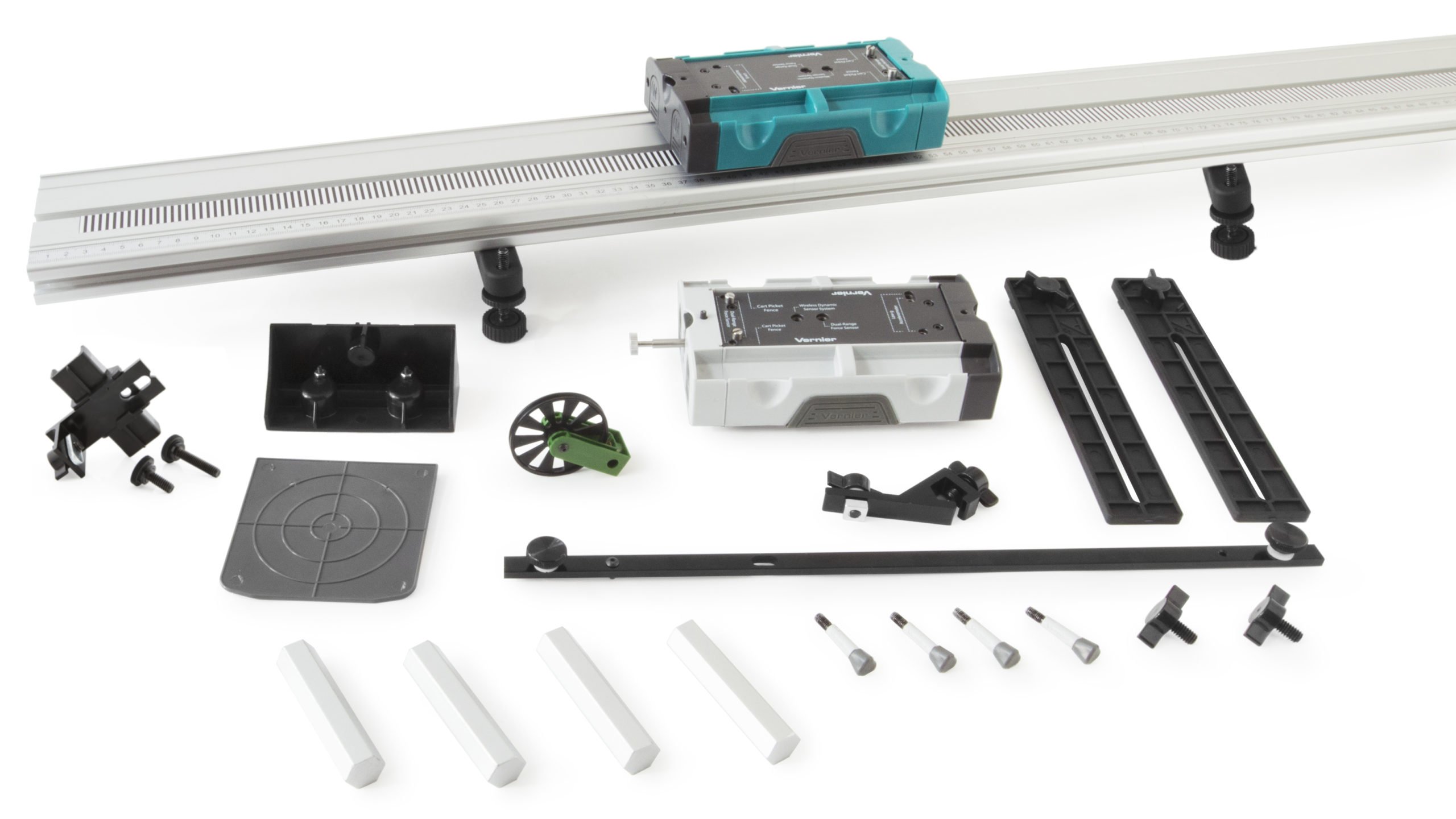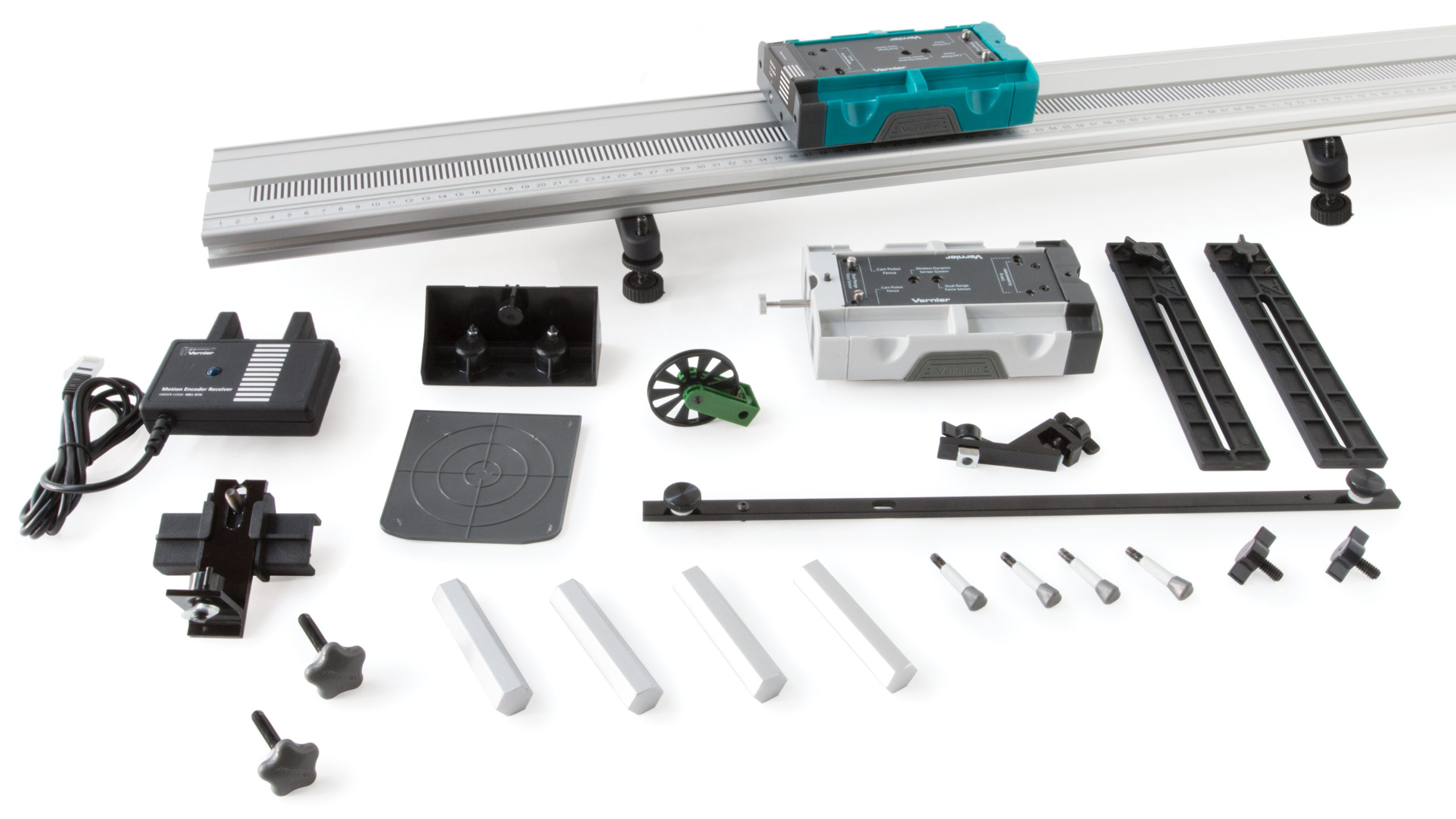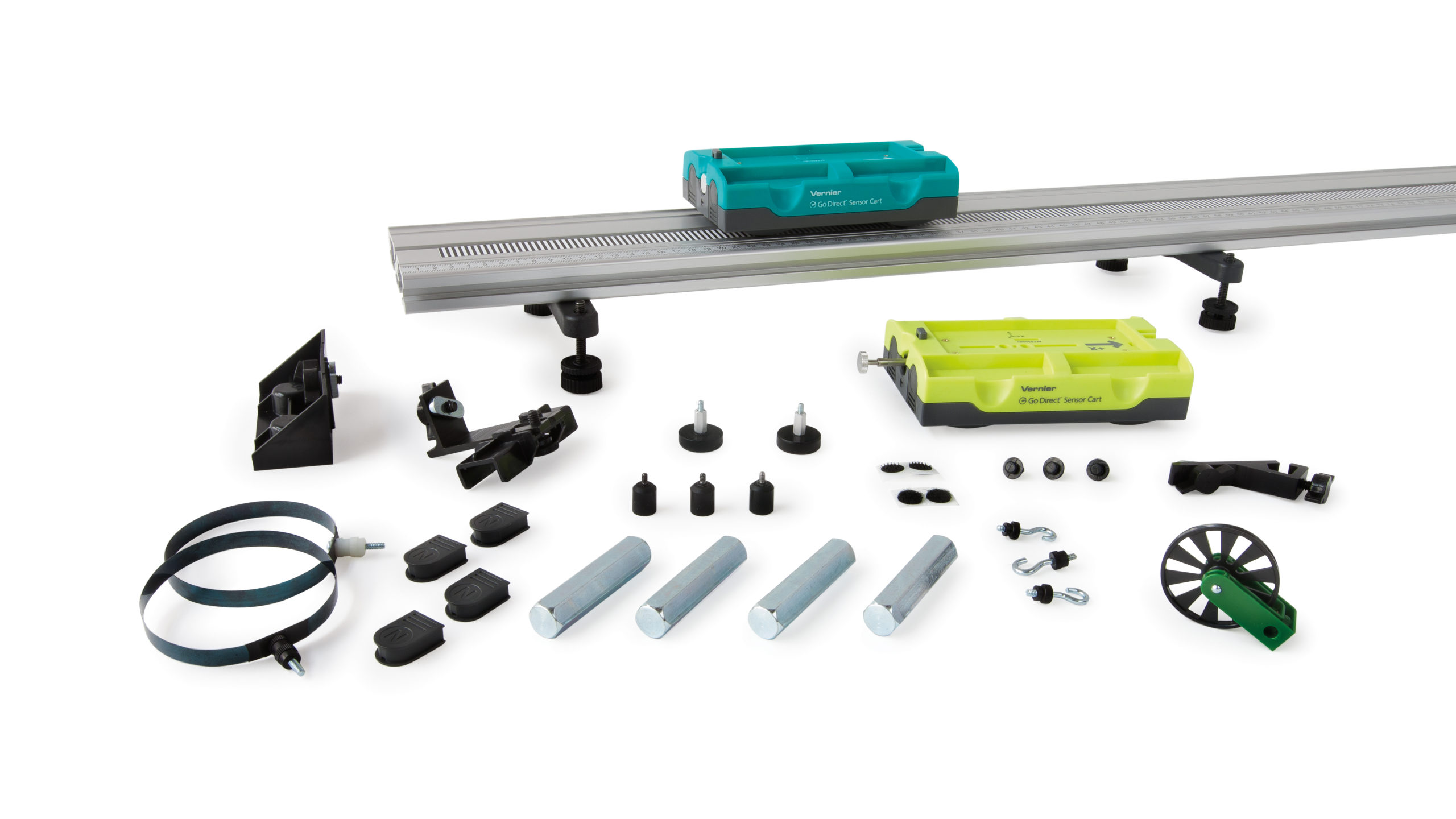There are three options for you to consider. All three options can be purchased with either a 1.2 meter or 2.2 meter (long) track. For most users, the 1.2 meter track is sufficient.
If after reading over this information you are still unsure which system to get, we are always happy to help you find the solution that will both fit within your budget and work with equipment you already own. This is often done best through a chat or brief phone call with one of our physics specialists (call 888-837-6437 and ask for physics tech support).
Option 1:
Dynamics Cart and Track System (DTS ) and (DTS-LONG)
This may be your preferred option based on price; however, this system does not come with any sensors. To measure the motion of a cart using this dynamics system, you will also need a motion detector or a pair of photogates.

- You would also want one or two force sensors per setup if you want to investigate forces during collisions.
- Many customers also order the Bumper and Launcher Kit (
BLK ) for impulse and momentum experiments. - The downside of this system is that the motion detector data for monitoring the cart are not very clean. It works, but there are improved ways of measuring that motion. For example, running a string over a pulley at the end of the track and monitoring the pulley with a photogate offers improvement over the motion detector for investigations related to accelerated motion.
Option 2:
Dynamics Cart and Track System with Motion Encoder (DTS-EC ) and
(DTS-EC-LONG)
If you want to improve the quality of the collected motion data and already own our stand-alone LabQuest units or Vernier interfaces (LabQuest Mini, LabQuest Stream, or LabPro), you should consider Option 2. This system includes the standard cart with motion encoding capabilities built in.

The included Motion Encoder cart offers a much cleaner measurement of the cart movement than you can get with a motion detector. In particular, the calculated velocity and acceleration data are much better than the same data from a motion detector.
- The Motion Encoder cart has an optical sensor that monitors the black and white decal on the track to determine the motion of the cart. The sensor sends data via infrared signal to the motion encoder receiver mounted at the end of the track. The receiver must be connected to an interface in order to send data to software.
- You would also want one or two force sensors per setup if you want to investigate the force during collisions.
- Many customers also order the Bumper and Launcher Kit (
BLK ) for impulse and momentum experiments. - The downside of this system is that it costs more. Also, only the standard cart has motion encoder capabilities—the plunger cart does not. That means that in order to to monitor the motion of both carts simultaneously, you would still need a motion detector, or you could purchase a second Motion Encoder Cart and Receiver (
DTS-MEC ) or a Motion Encoder Cart Upgrade Kit (DTS-MEU ) to install in the plunger cart.
Option 3:
Dynamics Cart and Track System with Go Direct® Sensor Carts (DTS-GDX )
and (DTS-GDX-LONG)
This is the best choice for most physics instructors.
If you are outfitting a physics laboratory from scratch, this is certainly your best option. Although this system costs more, if you consider the cost of buying all of the sensors and accessories to do the same experiments, this option has the lowest overall cost of ownership.

Both carts in this system have built-in Bluetooth sensors that communicate with any capable device (computer, Chromebook, tablet, or phone) running our Graphical Analysis app (Basic and Pro). This dynamics system can also be used with LabQuest 2 or LabQuest 3.
- The Sensor carts have an onboard fifth-wheel encoder system that monitors the motion of the cart. This capability gives you the same clean position, velocity, and acceleration data that you get with the motion encoder system. Since the carts do not depend on the black and white decal on the track for measurements, they can be used on or off the track.
- Since both carts have position sensors, you can monitor both carts during collision experiments without purchasing additional items.
- Each cart also has built-in force and acceleration sensors, so you don’t need to mount additional sensors on the carts or the track.
- The system comes with hoop and magnetic bumpers so you don’t need the Bumper and Launcher Kit for impulse and momentum experiments. For inelastic collisions, consider purchasing the Clay-Holder Bumpers with Clay (
CLAY-BMPRS ) (not included). - The Go Direct Sensor Carts must be used with Graphical Analysis, Graphical Analysis Pro, or LabQuest App. Our Logger Pro software does not collect data from Go Direct sensors. If you want to analyze the data in Logger Pro, you must first collect the data using Graphical Analysis or LabQuest App.
